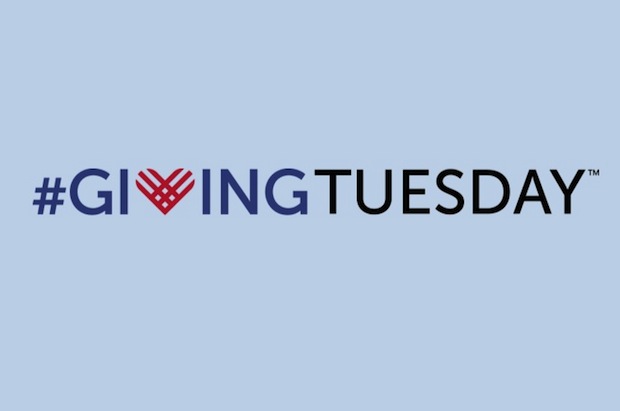“What? Am I boring you?” I asked, as my friend’s eyes wandered around his living room where we sat on the couch catching up last month.
“Oh, sorry. I’m just looking around the room and thinking about what’s broken, or might break soon. Or what’s missing in the room. Or…”
“Why? It’s a beautiful living room in a beautiful house. What’s the problem?” I asked.
“Nothing’s the problem, really. But every year when the calendar turns to November, with Black Friday coming up, I always go through this exercise of sitting in every room of my house and thinking about what I need. I try to see if anything’s broken or running low so I can stock up, replace, or upgrade when the sale season starts. If the TV’s starting to flicker, I buy the next one. If the iPad is getting old, time for the latest model. And if the kids are bored of their toys, I know they need new ones. And so on…”
Curious to better understand, I asked if he had a process. Here are the four steps he takes to prepare for Black Friday:
- Studies his surroundings and compiles a list of “needs”,
- Scours the local newspapers for coupons, then looks online for promotional codes,
- Reads every review he can find before finally making his purchases,
- Makes his purchases with full confidence that the product and the price are right for him.
That got me thinking. What if the 151 million Americans?who shopped this past weekend applied the same passionate fervor to Giving Tuesday as they do to Black Friday, Small Business Saturday, Cyber Monday, and whatever clever name we’ll eventually give to the Sunday in between once weekend sales inevitably dip below the targeted sum?
What would our society look like if Charity Navigator got as much traffic last weekend as Coupons.com? If #GivingTuesday trended more broadly than all the shopping hashtags combined? Sure, you might not get the quick fix of next-day delivery when you purchase baby carriers for Syrian refugees, but you’ll be making a purchase that does more than save money; it could save a life.
So try it out. Take my friend’s four-step approach to shopping sales and apply it to fixing our broken world.
- Take a mindful walk around your neighborhood, with eyes open to your surroundings. Look for the cracks. That’s where you’ll find an opportunity to let the light in. Or get in the car and drive around your nearest downtown. Or save the trip and read the news – local, national, or international, with a discerning eye. Then ask the all-important questions: What’s broken, and how can I fix it?
- Learn about the organization’s return on investment on Charity Navigator or Guidestar. You don’t need coupons and promo codes to find the charities that are making the most of your charitable dollars. Are they spending efficiently? Are they having an impact in the world?
- Read reviews of the charity. Ask your trusted friends where they give, and why. Crowdsourcing your reviews will help you become even more grounded in this giving experience. If the charity is local, go visit them and ask to meet with their staff. The more connected you are to them, the more meaningful your gift will become. There is no more relevant review than your own!
- Make your gift. Open your hand and open your heart, and you’ll find that giving can be just as beneficial to you as it is to your beneficiaries. And don’t worry about how much you’re able to give; give what you can. As Mother Teresa said: “It’s not how much we give, but how much love we put into giving.”
Lastly, if you’re still itching to treat yourself to something great, upgrade your bookshelf with this classic about the power of meaningful giving, written by Adam Grant, called Give and Take. No, it can’t stream movies or make you a delicious latte, but it might just change your life. And who knows; you might start to think of every Tuesday as a Giving Tuesday.

Rabbi Elan Babchuck is committed to leaving behind a world that is more compassionate and connected than the one he found. In pursuit of that commitment he serves as the Executive Vice President at Clal, the National Jewish Center for Learning and Leadership, and the Founding Executive Director of Glean Network, which partners with Columbia Business School. He was ordained in 2012, and earned his MBA that year, as well.
A sought-after thought leader, he has delivered keynotes at stages ranging from TEDx to the US Army’s General Officer Convocation, published in The Atlantic, The Guardian, Washington Post, and Religion News Service, has a column for The Wisdom Daily, contributed to Meaning Making – 8 Values That Drive America’s Newest Generations (2020, St. Mary’s Press) and is the co-author of the forthcoming book Picking Up the Pieces: Leadership After Empire (2023, Fortress Press).
He also serves as:
a Founding Partner of Starts With Us, a movement to counteract toxic polarization in America,
a Research Advisory Board Member of Springtide Research Institute, which focuses on spirituality, mental health and Gen Z,
a founding board member of Beloved Network, a network of startup Jewish communities, and
a member of the Board of Advisors of the Changemaker Initiative.
He lives in Providence, Rhode Island with his wife, Lizzie Pollock, and their three children: Micah, Nessa, and Ayla. In his spare time, he finds sanctuary while climbing rock walls around New England and tending to his backyard garden.

